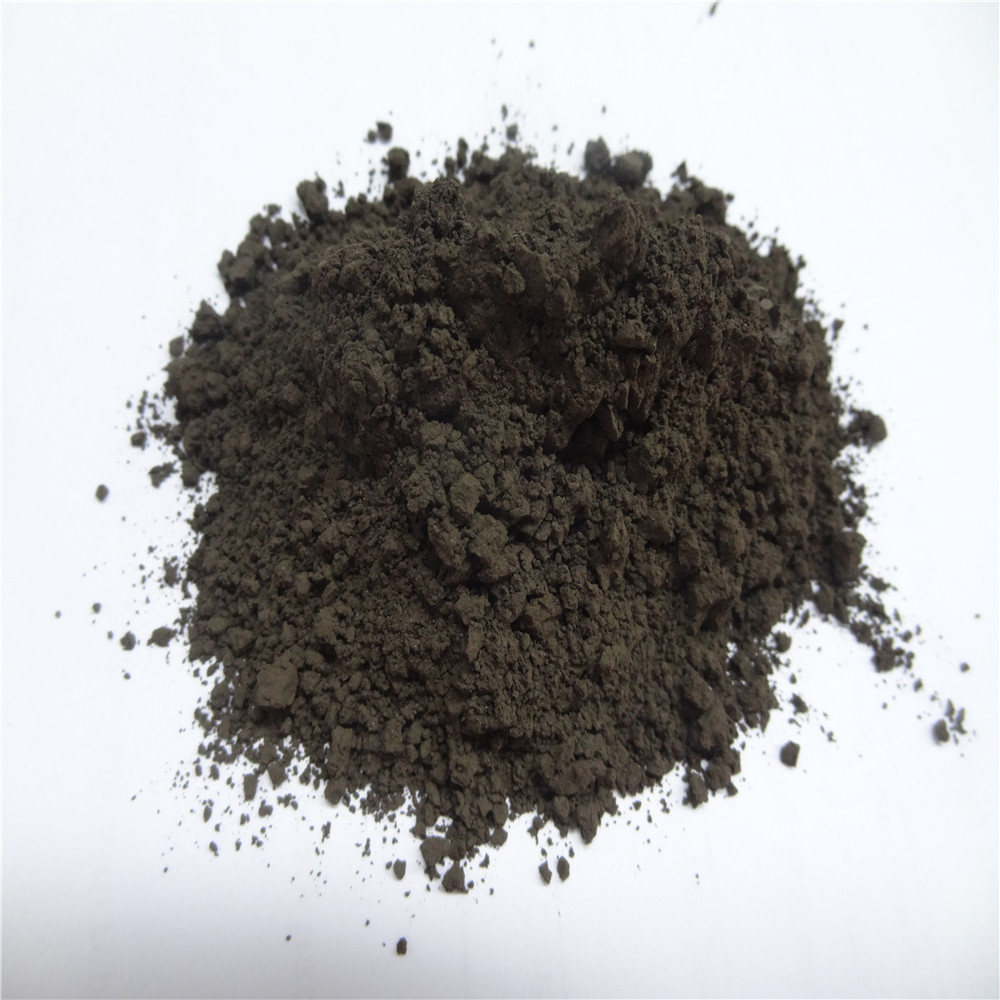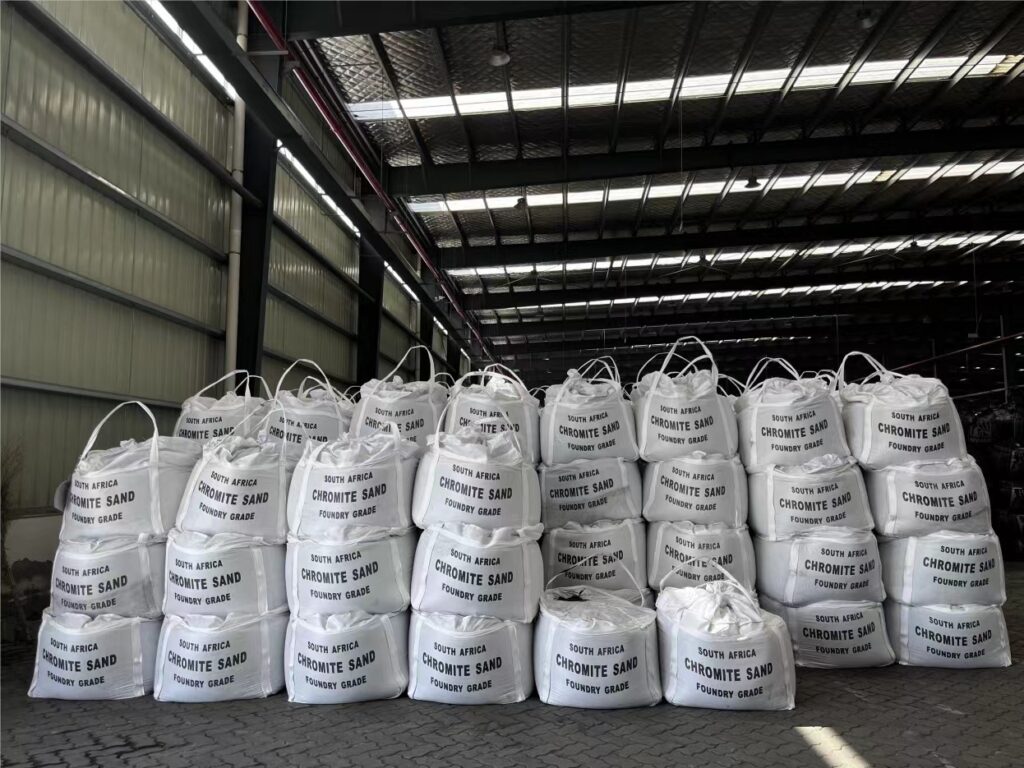The use of Chromite Flour 325 mesh as a foundry coating (refractory coating) is a highly specialized and critical application, primarily in the production of high-quality steel and manganese steel castings.
| PHYSICAL PROPERTIES(TYPICAL) | AVERAGE CHEMICAL COMPOSITION(TYPICAL) | ||
| PH | 7-9 | Cr2O3 | ≥46.0% |
| Color | Black | SiO2 | ≤1.0% |
| Acid Amount | ≤2m | Fe2O3 | ≤28.5% |
| Soil% | ≤0.1 | CaO | ≤0.30% |
| Bulk Density | 2.5-3.0g/cm3 | MgO | ≤10.0% |
| Specific Gravity | 4.0-4.8g/cm3 | Al2O3 | ≤15.5% |
| Moisture | ≤0.1% | P | ≤0.003% |
| Sintered temperature | ≥1800℃ | S | ≤0.003% |
| Free Acid | 0 | Cr/Fe | 1.55:1 |
| Filling density | 2.6g/cm3 | ||
| Melting temperature | ≥2180℃ | ||
What is the Purpose of a Foundry Coating?
A foundry coating, or mold wash, is a slurry applied to the surface of sand molds and cores. Its primary functions are:
Prevent Metal Penetration: To create a physical barrier that stops molten metal from seeping into the pores of the sand mold, which causes a defective, rough cast surface that is difficult to clean.
Improve Surface Finish: To produce a smooth, clean cast surface directly from the mold, reducing finishing and cleaning costs.
Act as a Thermal Barrier: To protect the sand mold from the intense heat of the molten metal, preventing “burn-on” or “burn-in” where sand fuses to the casting.
Provide Chemical Inertness: To resist chemical reactions between the molten metal and the sand mold.
Why Chromite Flour 325 Mesh ?
Chromite sand and flour possess a unique combination of properties that make them ideal for demanding foundry applications:
High Thermal Conductivity:
Benefit: Unlike insulating coatings, chromite’s high thermal conductivity helps draw heat away from the casting surface, promoting faster solidification (chilling). This results in a finer metallurgical structure and a cleaner, denser casting surface.
Exceptional Resistance to Metal Penetration:
Benefit: This is its key advantage. Chromite has a very low thermal expansion coefficient and does not have a disruptive phase change like silica sand. This means it maintains its structure at high temperatures, creating an effective, non-cracking barrier against molten metal, especially steel.
High Melting Point (~2150°C):
Benefit: It remains solid and stable when in contact with molten steel, which has a much lower pouring temperature (typically 1500-1600°C).
Chemical Neutrality:
Benefit: Chromite is chemically basic, which makes it highly resistant to basic slags (common in steel melting). It does not react easily with molten manganese steel or other alloys, preventing surface defects.
Optical Particle Size (325 Mesh):
What it means: 325 mesh corresponds to particles that are approximately 44 microns in diameter. This fine powder size is crucial for creating a smooth, dense coating layer that can effectively seal the surface of the sand mold.
Application Process in the Foundry
Preparation: The coating is mixed thoroughly to a specific density (e.g., Baume gravity) to ensure consistency.
Application: It is applied to the mold or core surface using:
Spraying: Most common method for uniform coverage.
Brushing: For touch-ups or small areas.
Dipping: For cores.
Drying:
Alcohol-Based: Dries almost instantly as the alcohol evaporates, which is highly efficient.
Water-Based: Requires longer drying times, often using gas torches or warm air to dry the mold completely before pouring. Any residual moisture can cause casting defects.
Key Advantages for Using Chromite Flour Coating
Superior Cast Surface Finish: Especially for carbon, low-alloy, and manganese steel castings.
Effective Anti-Penetration: Virtually eliminates burn-on and metal penetration.
Faster Cooling Rate: Leads to improved mechanical properties in the casting skin.
Chemical Stability: Ideal for casting reactive alloys.


